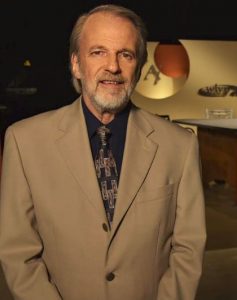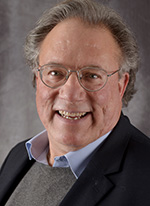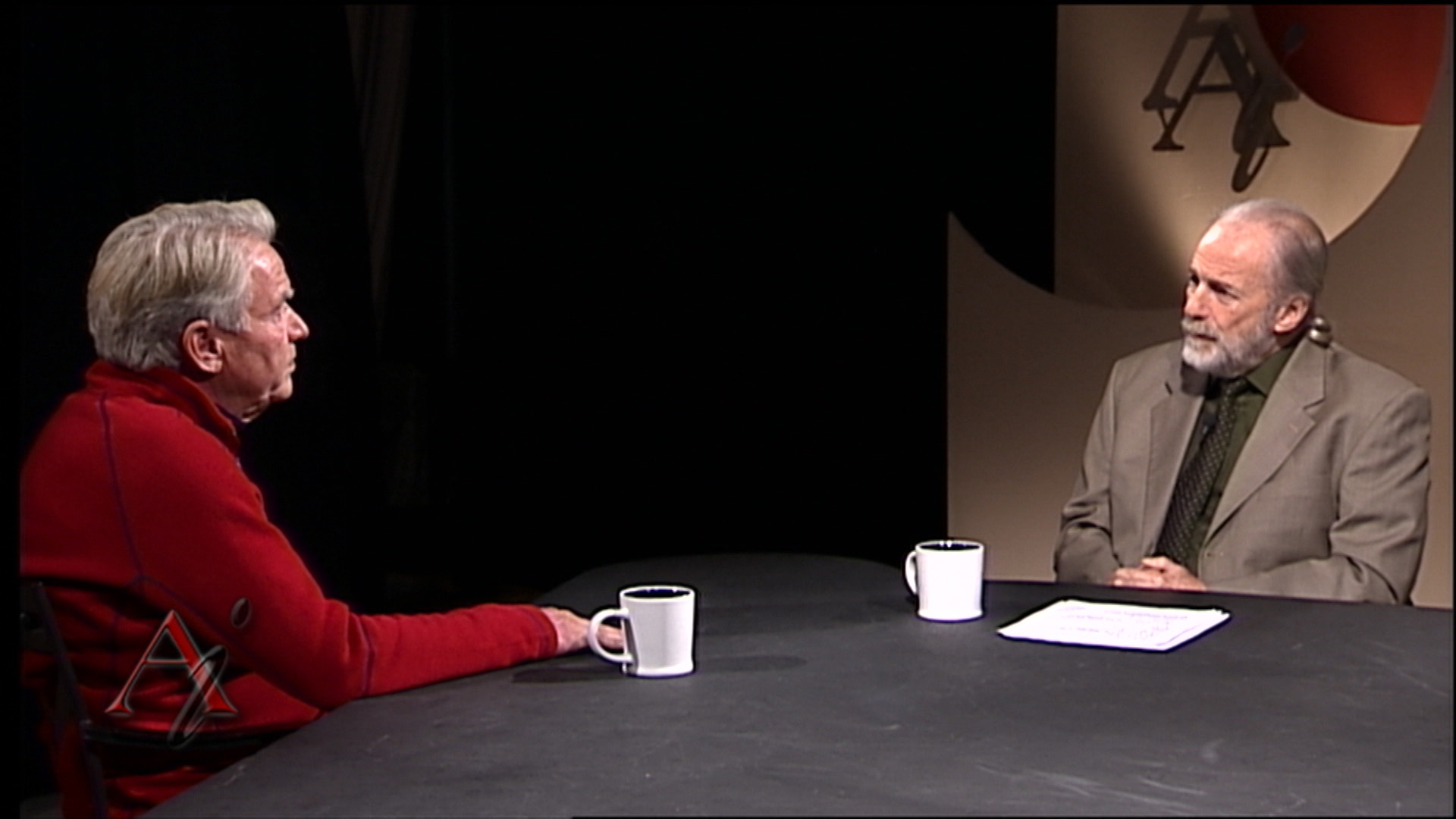After 35 years as host of At Issue on WTVP, H Wayne Wilson – make that just H – is riding off into the sunset
 After arriving in Peoria, H Wayne Wilson didn’t plan on sticking around long.
After arriving in Peoria, H Wayne Wilson didn’t plan on sticking around long.
Almost a half-century later, he’s still here.
“I planned to leave,” he said. “But I came to like Peoria. And I came to like the jobs I had in Peoria.”
He especially enjoyed 35 years as host of the show he created, WTVP’s At Issue. H — he is known simply as “H,” never Wilson or otherwise — retired from the program in August.
“I’ve been very lucky as a broadcaster,” the 75-year-old said. “Where else in American could a guy … decide the topic, decide who the guests will be, tape the show and not have interference?”
Good morning, Vietnam
H grew up in Libertyville, a north suburb of Chicago. After high school, he went to the Illinois Institute of Technology in Chicago, planning to become a civil engineer. But as a freshman, he was invited by a friend to check out the college television station, where on a whim he was invited to do an on-air tryout. He got hired immediately.
“I was hooked,” he said.
For three years, he worked for the station. He then left school to work at an electronics firm, no longer interested in engineering but not sure of a career.
“I knew I’d go back to school,” he said.
But that path took a detour in 1970, when he was drafted into the Army during the Vietnam War. He figured the Army might put his electronics and engineering training to use. Instead, noting his eight years of studying French, the Army assigned him to learn Vietnamese.
A year later, he was shipped off to a U.S. air base in Thailand, where he intercepted and translated North Vietnamese radio messages. The base frequently was targeted by mortar shells aimed at U.S. aircraft.
“I was fortunate,” he said. “I came back OK.”
At Issue is born
After three years of duty, he returned to Illinois and enrolled at Southern Illinois University, graduating in 1974 with a degree in broadcast management. Not long afterward, he accepted a job at WMBD-AM in Peoria, then moved to WCBU-FM. He later took a job at WHOI-TV, rising to assistant news director by 1988.
Meantime, since 1975, he had been volunteering at WTVP. There, an interview program ended upon the host’s departure in 1988. So, H proposed an in-depth news show that each week would focus on one issue.
“I wanted to do something that was news-oriented, that was being overlooked by the other stations,” he said.
WTVP agreed, and thus was born At Issue. But H declined a full-time job offer, preferring to produce and host the show as a freelancer so he could do other work locally. For example, for years he created three-minute, in-house videos for the likes of Caterpillar Inc. and Ameren, enjoying the wide-ranging freedom of a contract employee.
“That way I could do a little bit of everything,” he said.
Yet he always avoided taking any work that would create a conflict of interest with subjects on At Issue.
“I was very careful about that,” he said.
Politicians, robots, and solid reporting
As the producer of At Issue, H never ran out of weekly topics. His biggest challenge were guests who suddenly froze in front of the cameras, though he usually could get them to relax and chat.
“I think one of my strengths has been to give people a sense of comfort,” he said. “Most of my guests were very forthcoming.”
Well, except for one type, generally.
“The toughest ones are politicians,” he said. “The politicians are robotic. They take a question, rephrase it and give a prepared answer.”
Over the years, he often would be approached by people on the street with comments about At Issue.
“It was a mixed bag,” he said. “Many said something like, ‘Thanks for bringing that topic to the forefront.’ And there were some who disagreed with the guests and wondered why I’d let them take their stance.
“I think people were glad (WTVP) did a program like At Issue, even though they might not agree with a guest’s opinion.”
Meantime, H produced and narrated more than 100 documentaries for WTVP. He long has wondered why Peoria’s commercial TV newscasts don’t do long-form reports when warranted. He thinks audiences would appreciate meatier reporting rather than further footage on the latest car wreck.
“I don’t mean half-hour documentaries,” he said. “Maybe just five minutes. If a station were to do those kinds of stories, they would be of much more value than (reports on) mangled metal.
“I think there is a thirst in this community for meaningful presentations that would help them understand what’s going on in their community.”
‘I know I’ll miss him’
H enjoyed providing meaningful presentations into this year, when he decided to retire at the end of August. Why?
“I’m 75 years old!” he said with a laugh.
He plans to finish some fixer-upper work on the Peoria home he shares with wife Michele, as well as spend time with nine grandchildren, who range in age from 5 to 17 years.
Meanwhile, At Issue continues on WTVP with new host Mark Welp.
Julie D. Sanders, WTVP’s interim station manager, called H “a legendary broadcaster, setting standards and protocols for generations of journalists.
“We are lucky to have had him as an integral part of our WTVP team for over 30 years,” she said. “His talent and integrity are unmatched in this community.”
Former Peoria Mayor Jim Ardis echoed those sentiments. He appeared on At Issue more than any other guest.
“In a very complimentary way, H is a dinosaur. He’s old school,” Ardis said. “He comes to work prepared to discuss all sides of an issue. He doesn’t take sides. He challenges his guests to express their vision or point of view. He’s never afraid to ask the tough questions. At the end of the show, his dedicated listeners make up their own minds on the topic discussed based on the information presented.
“I know I’ll miss him.”
What the H?
That leaves us with just one last question for the preeminent questioner: Will you finally reveal what the “H” stands for?
“Hell, no!” he said, with fake outrage.
He laughs, then explains the H — at least somewhat.
He won’t say whether there was/is a name for which H stands. Officially, various units of state and federal government identify him as “H Wayne Wilson.” That includes the Illinois Secretary of State’s Office, which long has issued him a driver’s license in the name of “H Wayne Wilson.”
As a child, H was known as Wayne, to his parents and everyone else, he said. But in his teens, he and his pals jokingly adopted an affectatious formality when addressing each other: They’d reduce a first name to an initial, followed by the middle name and surname. Thus, friends began calling him “H Wayne Wilson” – and it stuck.
“This was not by design,” he said. “It was not my plan. I didn’t ask to be called H.
“But it’s served me well as a broadcaster.”





